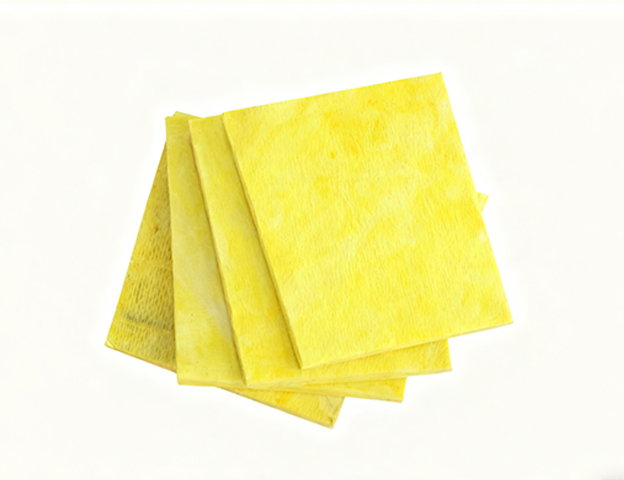
Comprehensive Guide to Glass Wool Specifications and Technical Parameters
1. Introduction to Glass Wool
Glass wool is a versatile and widely used insulation material made from molten glass spun into fine fibers. It is known for its excellent Thermal and Acoustic Insulation properties, fire resistance, and durability. Glass wool is commonly used in residential, commercial, and industrial applications, including walls, roofs, HVAC systems, and industrial equipment.
This guide provides a detailed overview of glass wool specifications and technical parameters, helping engineers, architects, and contractors select the right product for their projects.
---
2. Manufacturing Process of Glass Wool
Glass wool is produced through the following steps:
1. Raw Material Preparation: Recycled glass (cullet) and natural minerals (silica sand, soda ash, limestone) are melted in a furnace at around 1,400°C.
2. Fiber Formation: The molten glass is spun into fine fibers using centrifugal force or a blowing process.
3. Binding: A thermosetting resin (typically phenol-formaldehyde or acrylic-based) is applied to bind the fibers.
4. Curing: The material passes through an oven to cure the binder and stabilize the structure.
5. Cutting & Packaging: The final product is cut into rolls, batts, or boards and packaged for distribution.
---
3. Key Specifications of Glass Wool
3.1 Density (kg/m³)
Density affects thermal performance, mechanical strength, and sound absorption. Common densities include:
- Low-density (10-24 kg/m³): Used for lightweight applications like residential attic insulation.
- Medium-density (24-48 kg/m³): Suitable for walls, ceilings, and HVAC ducts.
- High-density (48-96 kg/m³): Used in industrial applications requiring structural rigidity.
3.2 Thermal Conductivity (λ or k-value) (W/m·K)
Thermal conductivity measures how well the material resists heat flow. Lower values indicate better insulation. Typical ranges:
- 0.032 – 0.044 W/m·K (depending on density and fiber structure).
3.3 Thickness (mm)
Available in various thicknesses (25mm to 200mm) to meet different thermal and acoustic requirements.
3.4 Fire Resistance
Glass wool is non-combustible (Euroclass A1 or ASTM E136) and can withstand temperatures up to 500°C without melting.
3.5 Sound Absorption (NRC & STC)
- Noise Reduction Coefficient (NRC): Measures mid-frequency sound absorption (0.7 – 1.0 for high-performance glass wool).
- Sound Transmission Class (STC): Rates sound insulation between rooms (STC 40+ for effective noise reduction).
3.6 Moisture Resistance
Glass wool is hydrophobic (repels water) but should be protected from prolonged exposure to moisture to prevent performance degradation.
3.7 Compressive Strength (kPa)
Important for load-bearing applications (e.g., roofing). High-density glass wool can withstand 10-50 kPa pressure.
3.8 Vapor Permeability
Glass wool is vapor-permeable, allowing moisture to escape and preventing condensation (µ-value ≈ 1).
3.9 Environmental & Health Safety
- Formaldehyde-free options: Available for improved indoor air quality.
- Recyclability: Up to 80% recycled content possible.
- Non-carcinogenic: Complies with EU REACH and OSHA standards.
---
4. Technical Parameters & Standards
4.1 International Standards
- ISO 8143: Thermal insulation products for buildings.
- ASTM C665: Standard specification for mineral fiber insulation.
- EN 13162: European standard for glass wool products.
- GB/T 13350: Chinese standard for Glass Wool Insulation.
4.2 Mechanical Properties
| Parameter | Typical Value |
|-----------|--------------|
| Tensile Strength | 5-15 kPa |
| Compression Resistance | 10-50 kPa |
| Flexural Strength | 20-100 kPa |
4.3 Thermal Performance
| Thickness (mm) | R-Value (m²·K/W) | U-Value (W/m²·K) |
|---------------|----------------|----------------|
| 50 | 1.4 – 1.8 | 0.56 – 0.71 |
| 100 | 2.8 – 3.6 | 0.28 – 0.36 |
| 150 | 4.2 – 5.4 | 0.19 – 0.24 |
4.4 Acoustic Performance
| Frequency (Hz) | Sound Absorption Coefficient (α) |
|---------------|--------------------------------|
| 250 | 0.30 – 0.60 |
| 500 | 0.60 – 0.90 |
| 1000 | 0.80 – 1.00 |
| 2000 | 0.90 – 1.00 |
---
5. Applications of Glass Wool
5.1 Building Insulation
- Roofs & Attics: Reduces heat loss in winter and heat gain in summer.
- Walls & Partitions: Enhances thermal and acoustic comfort.
- Floors: Minimizes noise transmission between levels.
5.2 HVAC & Duct Insulation
- Prevents condensation and improves energy efficiency in air handling systems.
5.3 Industrial Applications
- Pipes & Boilers: Maintains process temperatures.
- Ovens & Furnaces: Provides high-temperature resistance.
5.4 Automotive & Marine
- Used in vehicles and ships for noise and thermal insulation.
---
6. Installation Guidelines
6.1 Handling & Safety
- Wear PPE (gloves, masks, goggles) to prevent skin irritation.
- Avoid compression, which reduces insulation effectiveness.
6.2 Best Practices
- Ensure proper sealing to prevent air gaps.
- Use vapor barriers in humid environments.
- Follow manufacturer guidelines for adhesive or mechanical fastening.
---
7. Advantages & Limitations
7.1 Advantages
- Excellent thermal insulation (low k-value).
- Superior sound absorption (high NRC).
- Fire-resistant & non-combustible (Euroclass A1).
- Eco-friendly (recyclable, low embodied energy).
7.2 Limitations
- Not waterproof (requires vapor barriers in wet conditions).
- Fibers can cause irritation (requires protective gear during installation).
---
8. Conclusion
Glass wool is a high-performance insulation material with excellent thermal, acoustic, and fire-resistant properties. By understanding its specifications—density, thermal conductivity, fire rating, and sound absorption—professionals can select the right product for their needs. Proper installation ensures optimal performance and longevity.
For further details, consult relevant international standards (EN, ASTM, ISO) and manufacturer datasheets to ensure compliance with project requirements.
---
This guide provides a comprehensive overview of glass wool’s technical aspects, helping users make informed decisions for construction and industrial applications.








Leave your email address and we will send you the latest product information

Langfang Huaneng Building Materials Co., Ltd. was established on October 24, 1996. It is a subsidiary of Huaneng Zhongtian Energy Conservation Technology Group Co., Ltd.
Copyright © 2025 Langfang Huaneng Building Materials Co., Ltd. All rights reserved
This website uses cookies to ensure you get the best experience on our website.
Comment
(0)